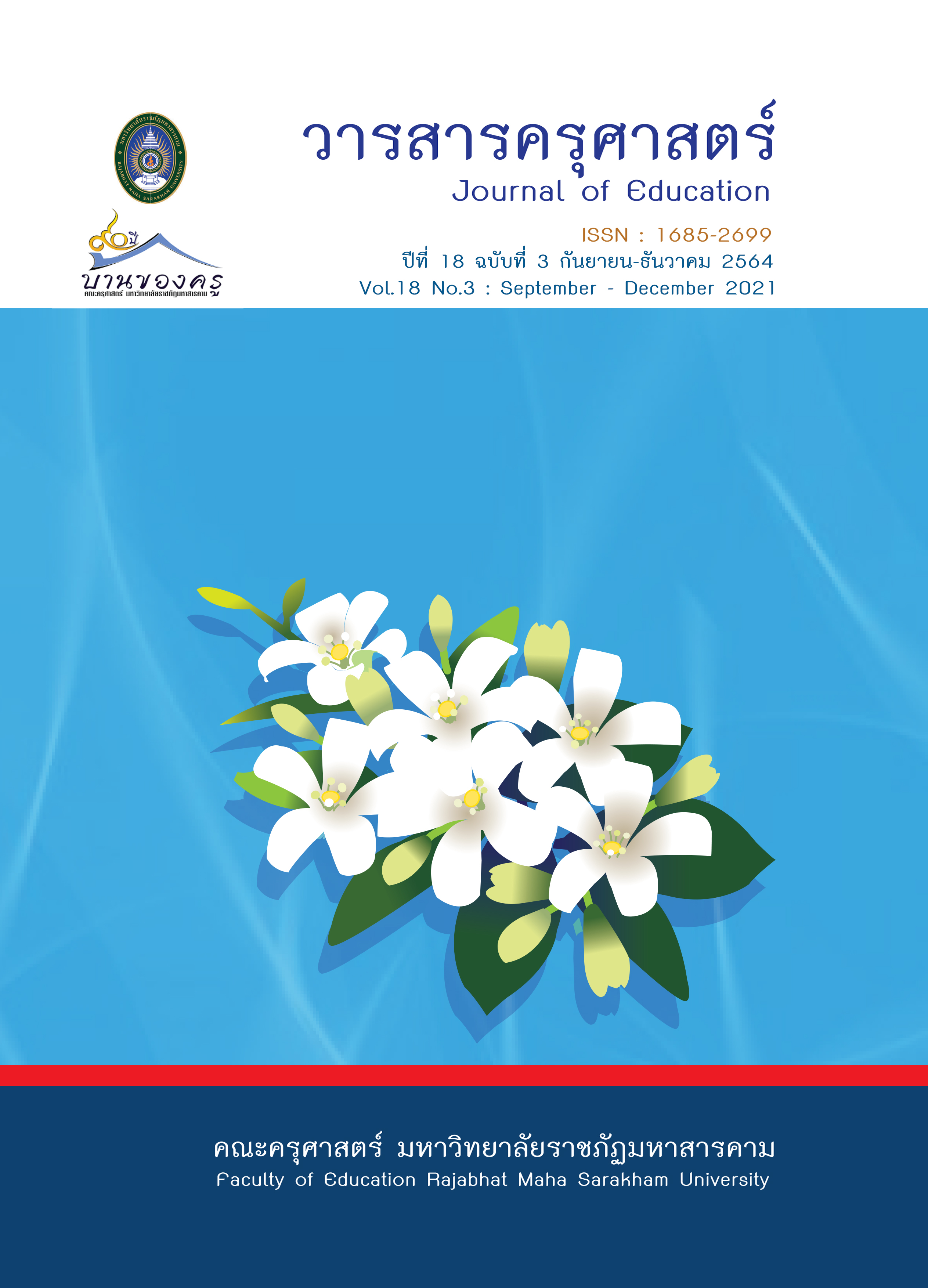The Promotion of Critical Thinking Ability through Flipped Classroom Learning Together with Infographic for Mathayomsuksa 5 Students of Phungdaet Wittayakarn School
Main Article Content
Abstract
The aims of this research were 1) to study the results of the promotion of critical thinking ability through flipped classroom learning together with infographic and 2) to study the satisfaction of students on the promotion of critical thinking ability through flipped classroom learning together with infographic. The target group of this research was Mathayomsuksa 5/1, Phungdaet Wittayakarn School. The study was conducted using an action research approach. The research tools were 1)two learning management plans on basic programming, 2) analytical thinking ability test, 3) students’ learning journal and 4) questionnaire of student satisfaction on the promotion of critical thinking ability through flipped classroom learning together with infographic. The data analysis statistics were descriptive statistics; mean, percentage and standard deviation.
The research findings were found that 1) the promotion of critical thinking ability through flipped classroom learning together with infographic consisted of two action cycles. Students’ critical thinking ability on the first action cycle was at a good level and the second action cycle was at very good level, respectively. 2) The student's satisfaction on the promotion of critical thinking ability through flipped classroom learning together with infographic was at the highest level (=4.57, S.D.= 0.33).
Article Details

This work is licensed under a Creative Commons Attribution-NonCommercial-NoDerivatives 4.0 International License.
ข้อกำหนดเบื้องต้นที่ผู้นิพนธ์(ผู้ส่งบทความ) ควรทราบ
1. ผู้นิพนธ์ที่ประสงค์จะลงตีพิมพ์บทความกับวารสาร ตั้งแต่เดือนมกราคม 2563 เป็นต้นไป ให้ใช้รูปแบบใหม่ (Template 2563) โดยสามารถดูตัวอย่างได้ที่เมนู GUIDELINES
2. จะตีพิมพ์และเผยแพร่ได้ ต้องผ่านการประเมินจากผู้ทรงคุณวุฒิ (Peer Review)
3. การประเมินบทความโดยผู้ทรงคุณวุฒิ (Peer Review) เป็นแบบ Double Blind
4. การอ้างอิงบทความใช้หลักเกณฑ์ APA (American Psychological Association) คลิก
5. บทความถูกปฏิเสธการตีพิมพ์ ไม่ผ่านการประเมิน ผู้นิพนธ์ขอยกเลิกเองหรือชำระเงินก่อนได้รับการอนุมัติ ทางวารสารไม่มีนโยบายการคืนเงิน
References
ปาณิสรา ศิลาพล,กอบสุข คงมนัส.(2560.) ผลการใช้อินโฟกราฟฟิกโดยใช้กระบวนการเรียน
แบบสืบเสาะที่มีต่อความสามารถด้าน การคิดวิเคราะห์ ของนักเรียนชั้นประถมศึกษาปีที่ 6.
วารสารการวิจัยเพื่อพัฒนาชุมชน, 10(2), 185-194.
พัชรา วาณิชวศิน (2558) ศักยภาพของอินโฟกราฟฟิก (Infographic) ในการเพิ่มคุณภาพการเรียนรู้
วารสารปัญญาภิวัฒน์, 7(2), 227-240.
อดุลย์ วังศรีคูณ (2557) การศึกษาไทยในศตวรรษที่ 21: ผลผลิตและแนวทางการพัฒนา
วารสารมนุษยศาสตร์และสังคมศาสตร์ บัณฑิตวิทยาลัย มหาวิทยาลัยราชภัฏพิบูลสงคราม, 8(1), 1-17.
อาลาวีย๊ะ สะอะ. (2559). ผลการจัดการเรียนรู้แบบห้องเรียนกลับทางที่มีต่อผลสัมฤทธิ์ทาง
การเรียน ความสามารถการคิดวิเคราะห์ และความพึงพอใจต่อการจัดการเรียนรู้ของ
นักเรียนชั้นมัธยมศึกษาปีที่ 5 .[ วิทยานิพนธ์ศึกษาศาสตรมหาบัณฑิต ไม่ได้ตีพิมพ์]
มหาวิทยาลัยสงขลานครินทร์.
อุไรวรรณ มากพูน. (2560). การพัฒนารูปแบบการจัดการเรียนรู้ตามแนวคิดห้องเรียนกลับด้าน
(Flipped Classrom) เพื่อส่งเสริมความสามารถในการคิดวิเคราะห์ กลุ่มสาระการเรียนรู้
สังคมศึกษา ศาสนา และวัฒนธรรม ชั้นมัธยมศึกษาปีที่ 6 วารสารเทคโนโลยีและสื่อสาร
การศึกษา, 2(6), 58-71.
Bergmann, J., & Sams, A. (2012). Flip your classroom: Reach every student in every
class every day. International Society for Technology in Education
Kharbach, M. (2012). Ways to Teach Using Infographics.
www.educatorstechnology.com/2013/02/ways-to-teach-using-infographics.html
Newson and Haynes (2005) Public Relations writing: Form and style (7th ed.). Wadsworth.
Smiciklas, M. (2012). The power of infographics: Using pictures to communicate and
connect with your audiences (Que Biz-Tech). Que
Wittich, W. A, and Schuller, F.S. (1973). Instructional technoloey it’s nature and use.
Harpea and Row Publishers.
Howard Young. (2561). shake hands with New Zealand for intense tutoring Leader in private
education.Lukyonegroup.


